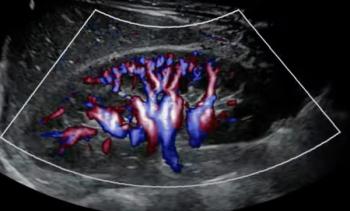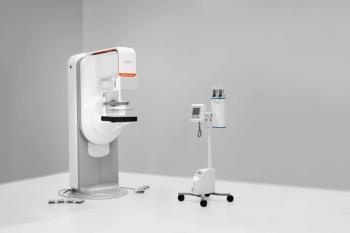
4D abdominal MRA competes well with DSA
Abdominal MR angiography can now be performed in real-time, eliminating digital subtraction angiography's one remaining edge, according to a study published in the October issue of Magnetic Resonance in Medicine.
Abdominal MR angiography can now be performed in real-time, eliminating digital subtraction angiography's one remaining edge, according to a study published in the October issue of Magnetic Resonance in Medicine.
Oliver Wieben, Ph.D., and colleagues at the University of Wisconsin performed 3D contrast-enhanced abdominal MRA in five healthy subjects and two patients with abdominal vascular disease. They linked a PC-based workstation with a standard 1.5T scanner to process time-resolved contrast kinetics (TRICKS) 3D data sets in real-time in a single breath-hold.
The 4D system gauged diaphragm motion over a long breath-hold and processed multiple coil data simultaneously. It provided information on general flow patterns and may be beneficial in the presence of aortic aneurysms, occlusions, and dissections.
Newsletter
Stay at the forefront of radiology with the Diagnostic Imaging newsletter, delivering the latest news, clinical insights, and imaging advancements for today’s radiologists.




























